This is a preprint.
Germline polymorphisms in the immunoglobulin kappa and lambda loci explain variation in the expressed light chain antibody repertoire
- PMID: 40501977
- PMCID: PMC12154815
- DOI: 10.1101/2025.05.28.656470
Germline polymorphisms in the immunoglobulin kappa and lambda loci explain variation in the expressed light chain antibody repertoire
Abstract
Variation in antibody (Ab) responses contributes to variable disease outcomes and therapeutic responsiveness, the determinants of which are incompletely understood. This study demonstrates that polymorphisms in immunoglobulin (IG) light chain loci dictate the composition of the Ab repertoire, establishing fundamental baseline differences that preclude functional Ab-mediated responses. Using long-read genomic sequencing of the IG kappa (IGK) and IG lambda (IGL) loci, we comprehensively resolved genetic variation, including novel structural variants, single nucleotide variants, and gene alleles. By integrating these genetic data with Ab repertoire profiling, we found that all forms of IG germline variation contributed to inter-individual gene usage differences for >70% of light chain genes in the repertoire, directly impacting the amino acids of expressed light chain transcripts, including complementarity determining region domains. The genomic locations of usage - associated variants in both intergenic and coding regions indicated that IG polymorphisms modulate gene usage via diverse mechanisms, likely including the modulation of V(D)J recombination, heavy and light chain pairing biases, and transcription/translation. Finally, relative to IGL, IGK was characterized by more extensive linkage disequilibrium and genetic co-regulation of gene usage, illuminating differential regulatory and evolutionary features between the two light chain loci. These results firmly establish the critical contribution of IG light chain polymorphism in Ab repertoire diversity, with important implications for investigating Ab responses in health and disease.
Conflict of interest statement
Competing interests C.T.W., M.L.S., and W.L. are founders and shareholders of Clareo Biosciences, Inc. and serve on its Executive Board.
Figures
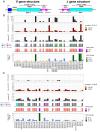
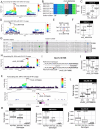
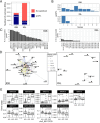
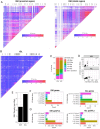

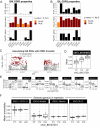
Similar articles
-
Germline polymorphisms in the immunoglobulin kappa and lambda loci explain variation in the expressed light chain antibody repertoire.Res Sq [Preprint]. 2025 Jul 16:rs.3.rs-6994086. doi: 10.21203/rs.3.rs-6994086/v1. Res Sq. 2025. PMID: 40709274 Free PMC article. Preprint.
-
Characterization of extensive diversity in immunoglobulin light chain variable germline genes across biomedically important mouse strains.Immunohorizons. 2025 Jul 14;9(8):vlaf031. doi: 10.1093/immhor/vlaf031. Immunohorizons. 2025. PMID: 40682361 Free PMC article.
-
Comparative Analysis of Mammalian Adaptive Immune Loci Revealed Spectacular Divergence and Common Genetic Patterns.Mol Biol Evol. 2025 Jul 1;42(7):msaf152. doi: 10.1093/molbev/msaf152. Mol Biol Evol. 2025. PMID: 40580934 Free PMC article.
-
Immunogenicity and seroefficacy of pneumococcal conjugate vaccines: a systematic review and network meta-analysis.Health Technol Assess. 2024 Jul;28(34):1-109. doi: 10.3310/YWHA3079. Health Technol Assess. 2024. PMID: 39046101 Free PMC article.
-
Systemic pharmacological treatments for chronic plaque psoriasis: a network meta-analysis.Cochrane Database Syst Rev. 2017 Dec 22;12(12):CD011535. doi: 10.1002/14651858.CD011535.pub2. Cochrane Database Syst Rev. 2017. Update in: Cochrane Database Syst Rev. 2020 Jan 9;1:CD011535. doi: 10.1002/14651858.CD011535.pub3. PMID: 29271481 Free PMC article. Updated.
References
Publication types
Grants and funding
LinkOut - more resources
Full Text Sources
